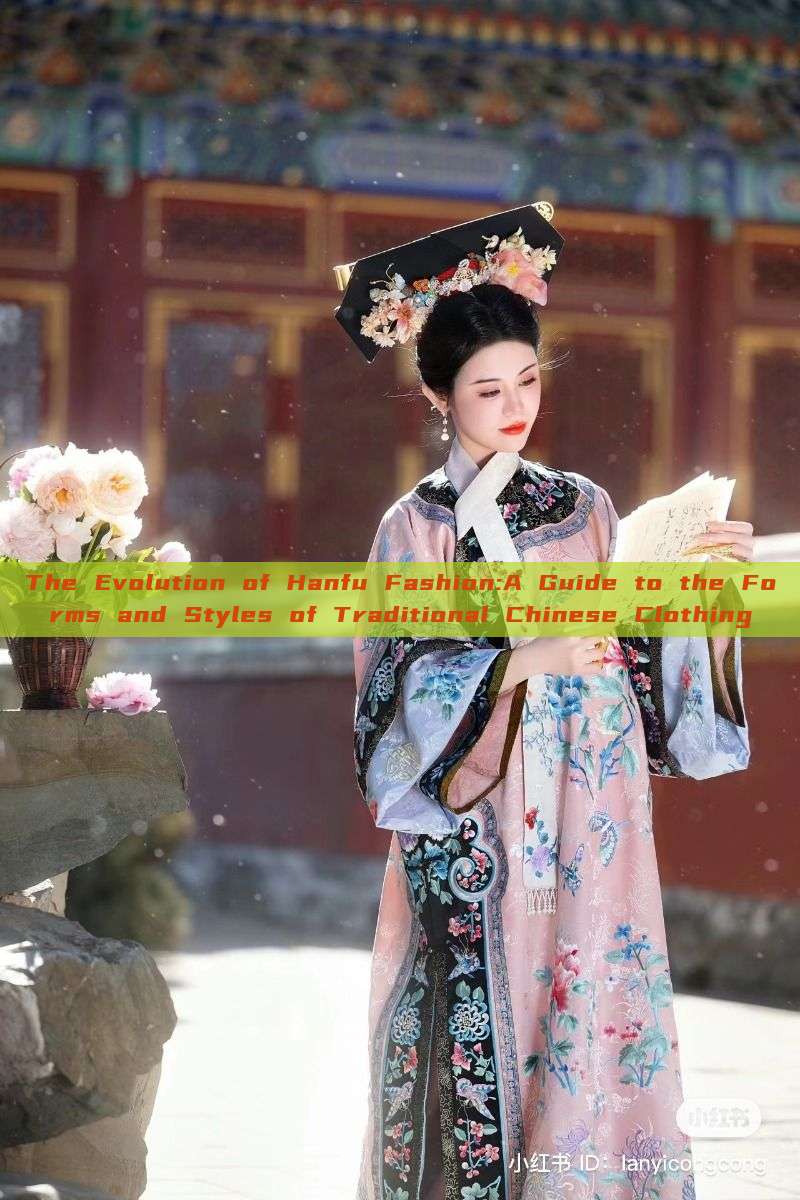The Evolution of Hanfu Fashion:A Guide to the Forms and Styles of Traditional Chinese Clothing
Article Content:

Introducing the rich history and intricate designs of Hanfu, this article delves into the various forms and styles of traditional Chinese clothing.
Originating from the Han dynasty (206 BC – 220 AD), Hanfu, also known as ‘Han clothing’, is a cultural symbol of China’s ancient history and civilization. It represents a blend of art, history, and fashion, embodying the essence of traditional Chinese culture.
The earliest Hanfu was influenced by the ‘深衣’ (deep-colored robe) style, characterized by its simplicity and elegance. As time progressed, various layers of clothing were introduced, including undergarments, middle layers, and outer robes. Each layer had its own unique design and purpose, creating a rich tapestry of traditional Chinese fashion.
The outer robes were often made of silk or other luxurious materials and were adorned with intricate patterns and designs. These patterns were often symbolic, representing elements like clouds, mountains, or animals. The color of the robes also held significance, with each color representing a different meaning or symbol.
One of the most distinctive features of Hanfu is its use of accessories. These accessories, ranging from headwear to footwear, added a touch of elegance and uniqueness to the overall ensemble. The headwear, for instance, was often adorned with jewelry and ornaments, further enhancing the wearer’s appearance.
During the Song and Ming dynasties, Hanfu underwent significant changes, evolving in style and design. The Song dynasty saw a shift towards simpler styles, while the Ming dynasty introduced more vibrant colors and intricate patterns. These changes reflected the cultural and societal shifts that occurred during these periods.
Another noteworthy aspect of Hanfu is its adaptability. Despite its traditional roots, Hanfu has undergone modernization, allowing it to evolve with changing times. Modern designers have incorporated contemporary elements into traditional Hanfu designs, creating a fusion of ancient and modern fashion.
Today, Hanfu has gained international recognition and has become a symbol of cultural pride for many Chinese people. It is not only worn during festivals and special occasions but has also become a part of everyday fashion. The revival of Hanfu has also led to the emergence of various online communities and events dedicated to promoting and preserving this traditional fashion.
In conclusion, Hanfu represents a rich tapestry of Chinese history and culture. Its evolution through different dynasties reflects the cultural and societal shifts that have occurred over time. The adaptability of Hanfu has allowed it to evolve with changing times, making it a relevant fashion trend even today. Through its intricate designs and symbolism, Hanfu continues to captivate the hearts of many, acting as a bridge between the past and present, connecting generations and cultures.
This guide aims to provide a comprehensive overview of the forms and styles of traditional Chinese clothing, highlighting the rich history and culture behind Hanfu fashion. From its origins in the Han dynasty to its modern adaptation, this article delves into the beauty and significance of Hanfu, inviting readers to appreciate and understand the essence of traditional Chinese culture.
Related Recommendations
-

Adult Womens Hanfu Traditional Costumes:Embracing the Beauty of Ancient Chinese Attire
-

The Enchantment of Medieval Decorative Art:An Insight into the Splendor of Ancient Paintings
-

The Cheongsam:A Tale of Womens Fashion in the Republic of China
-

The Fabric of a Cheongsam:A Close Examination of its Sample


